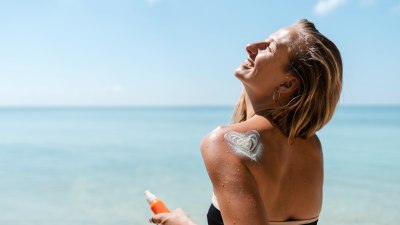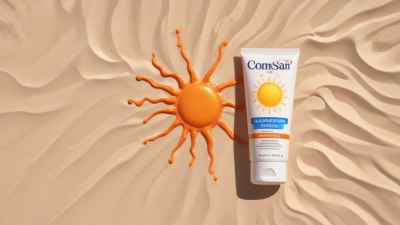Sunscreen Myths That Could Land You in the Hospital
Explore common sunscreen myths that risk your health and learn how to protect your skin effectively to avoid serious sun-related injuries.

Sun protection is essential year-round, but many people fall prey to myths about sunscreen that could lead to severe skin damage or even hospitalization. Understanding the facts about sunscreen is crucial for safe sun exposure and skin health. This article dispels common sunscreen myths and provides accurate guidance on how to protect your skin effectively.
Myth 1: You Don’t Need Sunscreen on Cloudy Days
A widespread misconception is that sunscreen is only necessary on sunny days. However, ultraviolet (UV) rays can penetrate clouds and reach your skin. In fact, up to 80% of UV rays pass through clouds. This means you are still at risk of sunburn and skin damage even on overcast days. Ignoring sunscreen on cloudy days increases your risk of developing sunburn, premature skin aging, and skin cancers such as melanoma.
Experts recommend applying sunscreen daily, regardless of the weather. This helps shield your skin from the invisible UVA and UVB rays that cause harm over time. Cloudy skies can give a false sense of security, leading people to underestimate their sun exposure and skip protection.
Myth 2: Sunscreen Is Only Needed When Spending Hours Outdoors
Another common myth is that sunscreen is only necessary if you plan to be outside for a long time. In reality, UV exposure begins as soon as you step outside. Even brief periods — such as walking to your car, running errands, or sitting by a window — can contribute to cumulative sun damage.
Consistent daily application of sunscreen helps guard against the harmful effects of incidental sun exposure that add up over months and years. This is essential for preventing skin issues like discoloration, sun spots, and increased skin cancer risk. Dermatologists advise applying sunscreen every day, not just on prolonged outdoor excursions.
Myth 3: A Higher SPF Means You Can Stay in the Sun Indefinitely
SPF, or Sun Protection Factor, indicates how well a sunscreen protects against UVB rays that cause sunburn. While higher SPF numbers provide greater protection, there’s a limit to their effectiveness. For example, SPF 30 blocks about 97% of UVB rays, and SPF 50 blocks around 98%. No sunscreen can block 100% of UV rays.
Relying on sunscreen with a high SPF to stay in the sun for hours without reapplying is risky. Sunscreen can wear off due to sweating, swimming, or towel drying. Regular reapplication every two hours, or more frequently if swimming or sweating, is essential for continuous protection. Additionally, wear protective clothing and seek shade during peak sun intensity.
Myth 4: You Don’t Need to Reapply If the Sunscreen Is Labeled “Water-Resistant”
Water-resistant sunscreens provide protection during sweating or brief water exposure, but this does not mean they are waterproof or last all day. The water resistance typically lasts for 40 to 80 minutes. After that, the sunscreen’s effectiveness significantly decreases.
Failing to reapply water-resistant sunscreen after swimming or heavy sweating jeopardizes your skin’s defense against UV rays. Follow package directions carefully and reapply as recommended, especially after physical activity or towel drying. Misunderstanding water resistance can lead to prolonged unprotected exposure, increasing the risk of sunburn and serious skin damage.
Myth 5: Sunscreen Is Unnecessary for People with Dark Skin
There is a harmful myth that people with darker skin tones do not need sunscreen because their melanin offers sufficient protection. While melanin does provide some degree of natural UV protection, it does not make skin impervious to sun damage or skin cancer.
People with dark skin can still suffer from sunburn, hyperpigmentation, and skin cancers that may be harder to detect at early stages. Sunscreen application is crucial for everyone, regardless of skin color, to reduce the risk of skin damage and serious conditions. Dermatologists recommend broad-spectrum sunscreen alongside other sun protection measures for all skin types.
Myth 6: Using Sunscreen Causes Vitamin D Deficiency
Vitamin D synthesis in the skin requires UVB exposure, so some believe that sunscreen use blocks this process and leads to deficiency. However, the typical use of sunscreen does not cause vitamin D deficiency. Studies have shown that daily sunscreen application provides adequate protection without interfering significantly with the skin’s ability to produce vitamin D.
Vitamin D levels are influenced by multiple factors including diet, geographic location, time spent outdoors, and skin pigmentation. For those concerned about low vitamin D, consulting a healthcare provider for testing and potential supplementation is a safer approach than forgoing sunscreen. Prioritizing sun safety remains vital to avoid the harmful effects of UV radiation.
Myth 7: Sunscreen Is Only Necessary on Summer Days
Many people associate sunscreen use solely with hot summer months, overlooking the fact that UV radiation is present year-round. Snow, sand, water, and concrete can all reflect UV rays, intensifying exposure during winter or early spring.
Winter sun can be surprisingly strong, especially at higher altitudes or in snowy areas where UV rays reflect off the snow’s surface. Skipping sunscreen during colder seasons can result in unprotected skin exposure, increasing cumulative damage and skin cancer risk. Applying sunscreen daily, regardless of season, supports long-term skin health.
Myth 8: You Can Use Expired Sunscreen Without Any Risk
Using expired sunscreen is ineffective and risky. Sunscreen products degrade over time, losing their ability to protect your skin from UV radiation. Expired sunscreen may offer little to no protection, leaving you vulnerable to sunburn and skin damage.
Always check the expiration date on sunscreen bottles and discard any products past their date. If no expiration date is visible, most sunscreens are recommended for use up to three years after manufacturing. Regularly replacing sunscreen ensures optimal protection and reduces the risk of severe sunburn or more serious skin injuries.
Myth 9: Applying Sunscreen Once Is Enough for All-Day Protection
Sunscreen effectiveness diminishes throughout the day, especially with sweating, swimming, or wiping skin. Applying sunscreen just once does not provide continuous protection against UV radiation. The general recommendation is to reapply sunscreen every two hours or immediately after getting wet.
Neglecting to reapply sunscreen increases the chance of sunburn, which can cause skin inflammation, pain, and in extreme cases, require medical attention or hospitalization for severe burns. Consistent reapplication is a simple yet vital practice for maintaining skin protection during prolonged sun exposure.
Myth 10: “Natural” or Homemade Sunscreens Are as Effective as Commercial Ones
Some people believe that natural or homemade sunscreens made with ingredients like coconut oil or shea butter offer comparable sun protection. However, these substances do not reliably block UVA or UVB rays and lack standardized testing to confirm their efficacy.
Using homemade sunscreens instead of properly formulated, broad-spectrum commercial products greatly increases the risk of sunburn and long-term skin damage. Only use sunscreens approved by regulatory bodies, labeled broad-spectrum, with an SPF of 30 or higher for effective UV protection. Natural oils may moisturize skin but do not replace sunscreen.
The Serious Risks of Ignoring Sunscreen Myths
Believing and acting on sunscreen myths can lead to severe health consequences. Inadequate sun protection is a leading cause of sunburns, which involve painful, inflamed skin that can blister and peel. Severe sunburn may require medical intervention, including hospitalization for fluid replacement and infection control.
Repeated unprotected UV exposure accelerates skin aging, causing wrinkles, leathery skin, and discoloration. More importantly, it significantly raises the risk of skin cancers, including melanoma, basal cell carcinoma, and squamous cell carcinoma. Early detection and treatment are critical, but prevention through effective sun protection remains the best strategy.
Using sunscreen correctly, along with other preventive measures like wearing hats, sunglasses, seeking shade, and wearing protective clothing, effectively minimizes the risk of sun-related health issues. Understanding and dispelling myths ensures better choices for your skin’s health and longevity.
How to Use Sunscreen Properly to Avoid Health Risks
To maximize sunscreen effectiveness, apply a generous amount to all exposed skin 15 to 30 minutes before going outdoors. Use at least one ounce (about a shot glass full) to cover your body. Choose broad-spectrum products that protect against both UVA and UVB rays with an SPF of 30 or higher.
Reapply sunscreen every two hours, and immediately after swimming, sweating, or towel drying. Even water-resistant sunscreens require this regimen. Avoid relying solely on sunscreen; incorporate other protective strategies such as wearing hats, UV-blocking sunglasses, and clothing with UPF (Ultraviolet Protection Factor) ratings.
Be mindful of sun peak hours, typically between 10 a.m. and 4 p.m., when UV radiation is strongest. Seek shade during these times whenever possible. Regular skin self-examinations and annual dermatologist visits help detect any early signs of skin damage or cancer.
Final Recommendations for Sun Safety
Sun safety is a comprehensive approach that involves more than just applying sunscreen. Staying informed about myths and facts is key to preventing sunburn and serious health consequences. Choose appropriate, broad-spectrum sunscreen daily, regardless of weather or skin color, and reapply as directed.
Use additional physical barriers like clothing and umbrellas, avoid tanning beds, and limit sun exposure during peak hours. Educate family and friends about sunscreen misconceptions to help protect their skin health, too. Taking these precautions ensures enjoyable and safe outdoor experiences without compromising long-term well-being.
Understanding and abandoning harmful sunscreen myths can save you from painful sunburns, serious skin conditions, and potential hospitalization. Adopt proven sun protection habits today to keep your skin healthy and protected for years to come.











